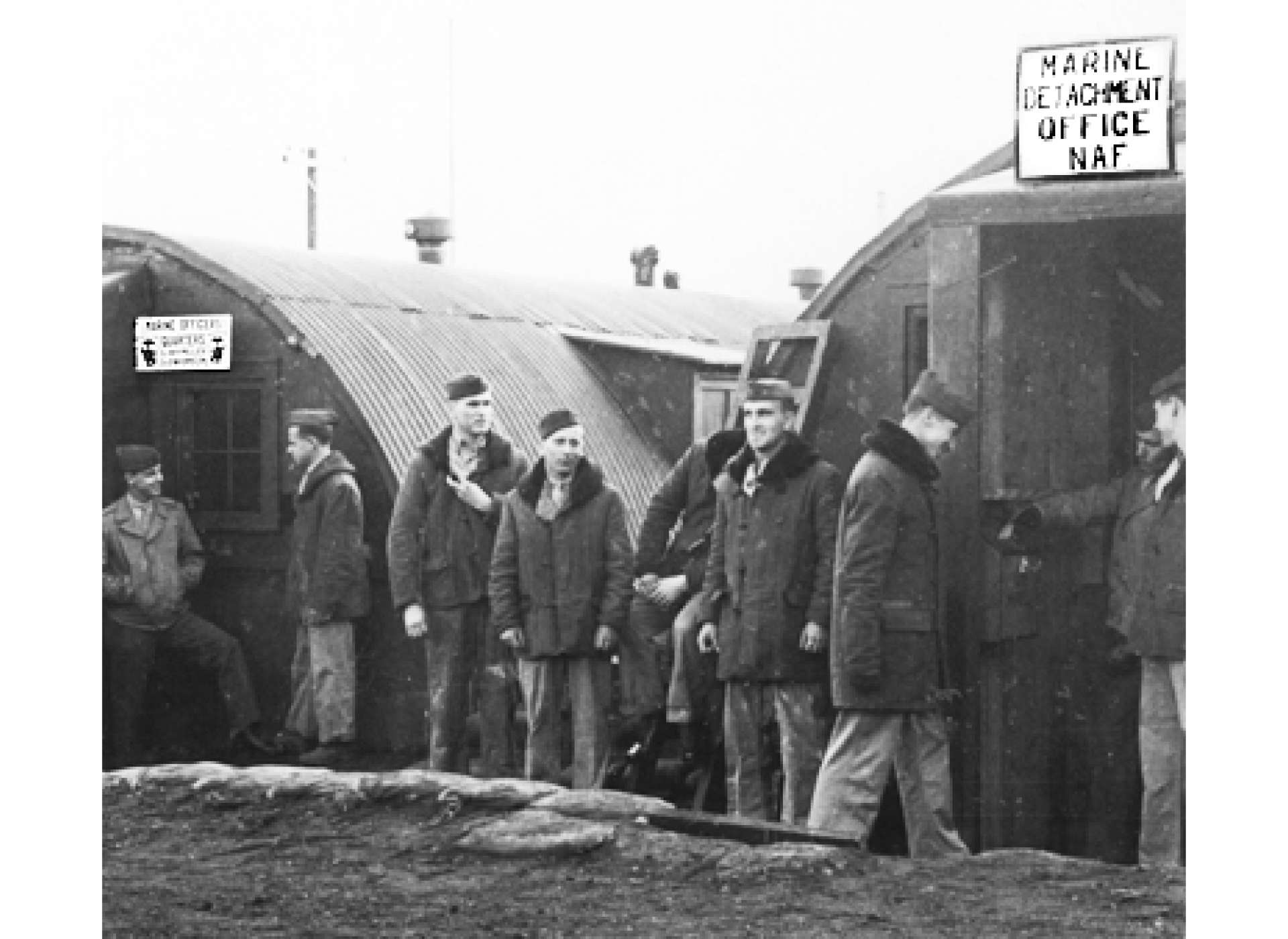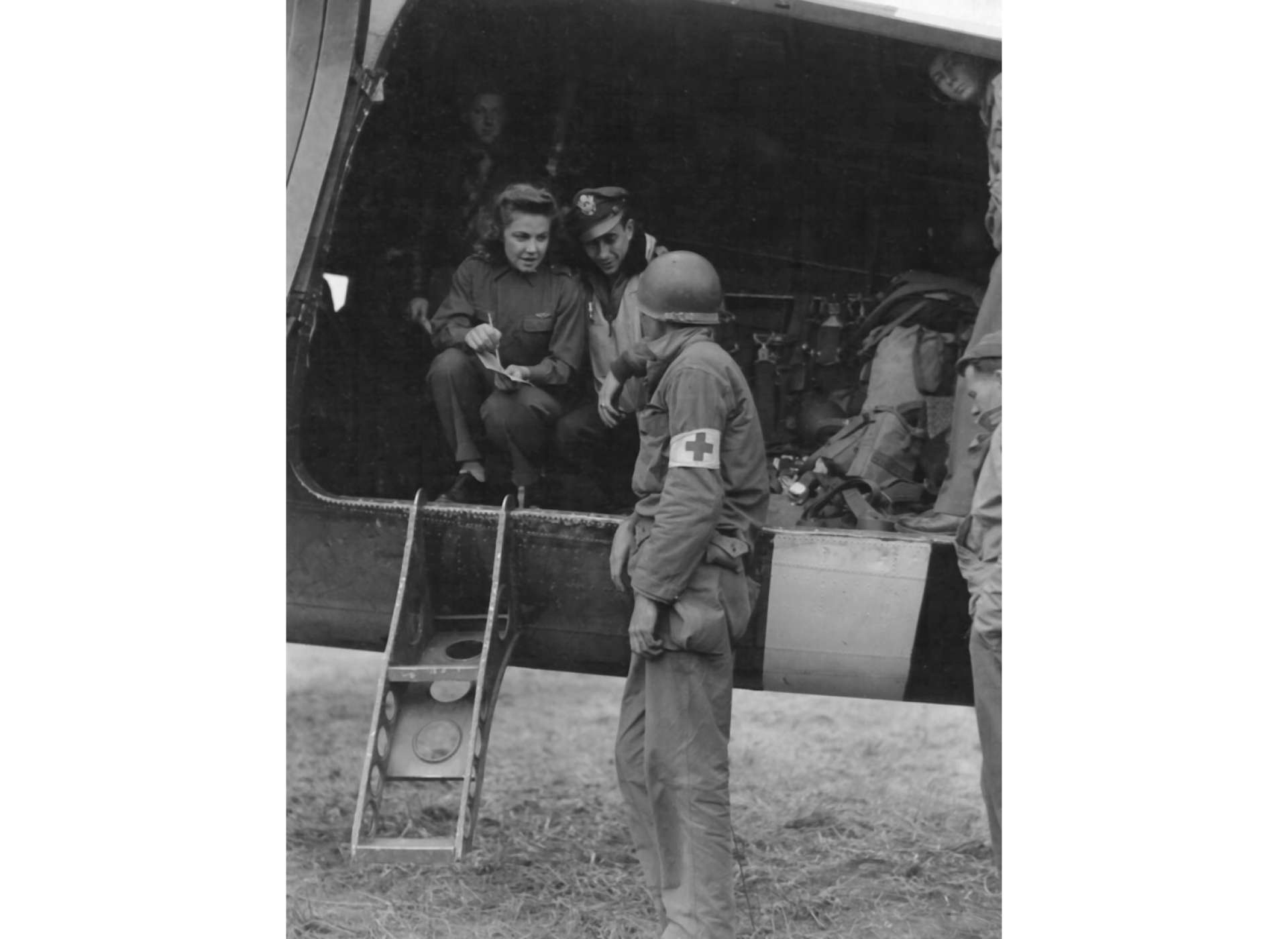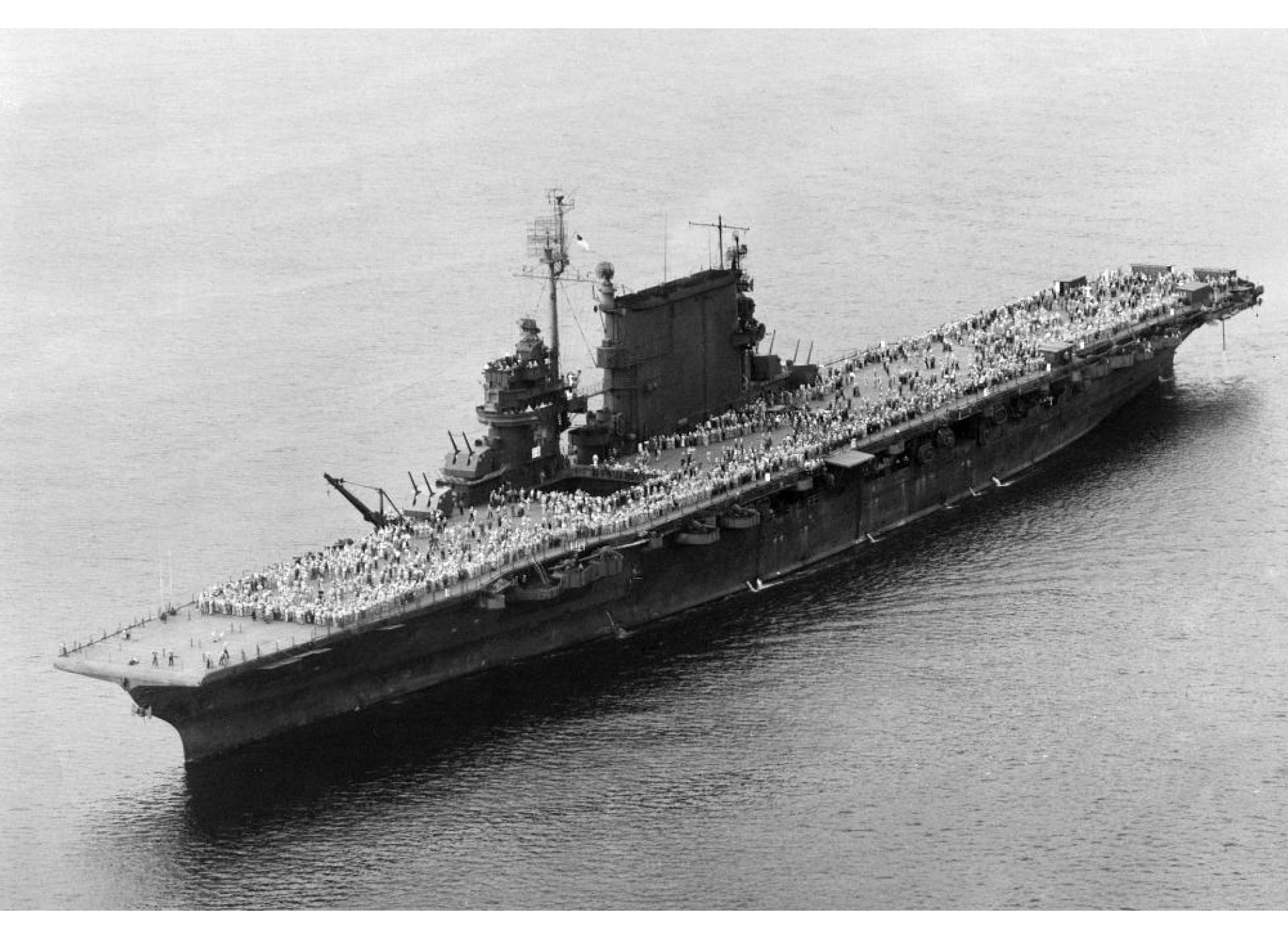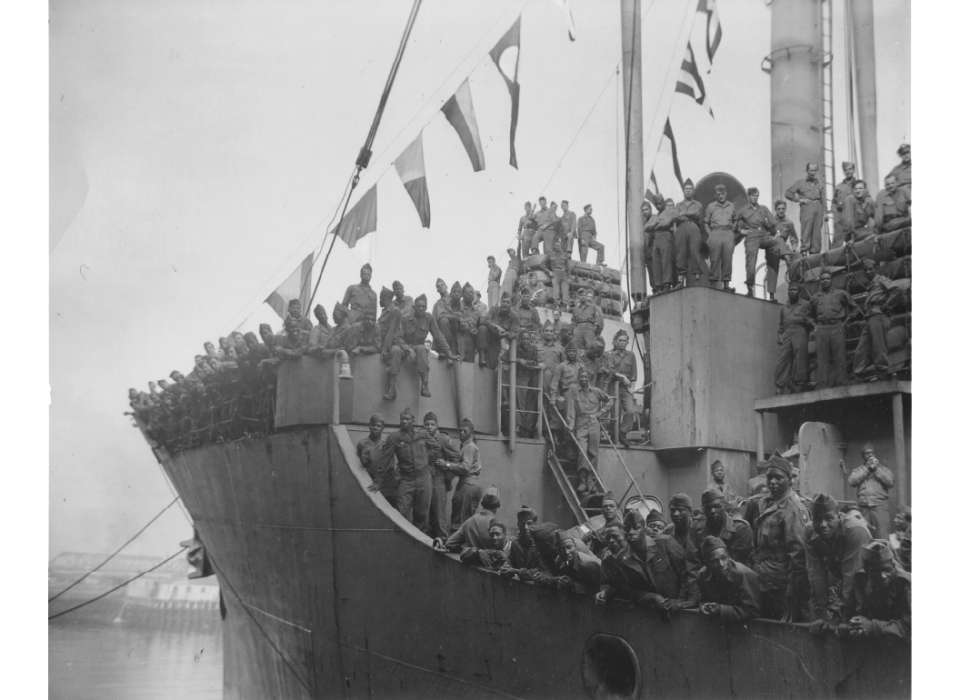The USNS Aiken Victory (T-AP-188), a converted Victory ship, arriving in Boston harbor on July 26, 1945 with 1,958 troops returning to the United States from deployment to Europe. Nearly 73 percent of the Americans serving in the Armed Forces in World War II deployed overseas.
October 26 marks the National Day of the Deployed. The day honors all servicemembers who have been deployed in the service of the United States. It also honors the sacrifices their families have made during deployments.
More Americans deployed to combat zones overseas during World War II than any other war in American history.
According to the US Department of Veterans Affairs (VA), during the World War II period, from September 16, 1940, through July 25, 1947, some 16.5 million men and women served in the US Armed Forces. This equates to about one-third of the American male population 15 years and older. Of those serving in uniform during World War II, approximately 73 percent, or more than 12 million Americans, served overseas.

In July 1941, US Marines occupied Iceland. In all, more than 12 million Americans served overseas during the wartime period between 1940 and 1947. (Department of Defense Photo (US Marine Corps) 185054)
At first glance, the dates used by the VA to mark the World War II period may seem unusual, since they do not denote either Pearl Harbor or V-J Day, the dates Americans typically use for the beginning and end of the war. The draft, or the Selective Service and Training Act, became law on September 16, 1940. The first peacetime draft in American history, the law required all American men between the ages of 21 (and later 18) and 45 to register for the draft. The period came to a close on July 25, 1947, when President Harry S. Truman signed a law ending 60 wartime emergency laws.
The strategic and tactical requirements of the Allied war effort to defeat the Axis powers required American forces to be deployed around the world. Some deployed by air, thanks to the Air Transport Command.

In 1942 the War Department ordered the development of a formal training program for flight nurses and other service personnel for aeromedical evacuation duties. By the end of the war, over 70 percent of the Air Transport Command was serving overseas. (Department of Defense)
Most American servicemen and women deployed by sea, and the majority of those in troopships. With the end of the war, the United States executed Operation MAGIC CARPET to bring more than 8 million servicemen and women home between June 1945 and September 1946. The operation used a range of vessels, from Army Transports to Liberty and Victory ships and even US Navy warships such as the carrier USS Saratoga (CV-3).

The USS Saratoga (CV-3) en route to the United States during her last run as a troop transport during Operation MAGIC CARPET. By the end of the operation, Saratoga had redeployed 29,204 veterans of the Pacific war, more than any other single ship.
Michael S. Bell, PhD
Mike Bell is the Executive Director of the Institute for the Study of War and Democracy.
Cite this article:
MLA Citation:
APA Citation:
Chicago Style Citation:





![Max Fuchs, New York City cantor, sings as Rabbi Sydney [sic] Lefkowitz, Richmond, VA, conducts the first Jewish services from Germany.](/sites/default/files/styles/max_650x650/public/2025-10/image1.jpg)



